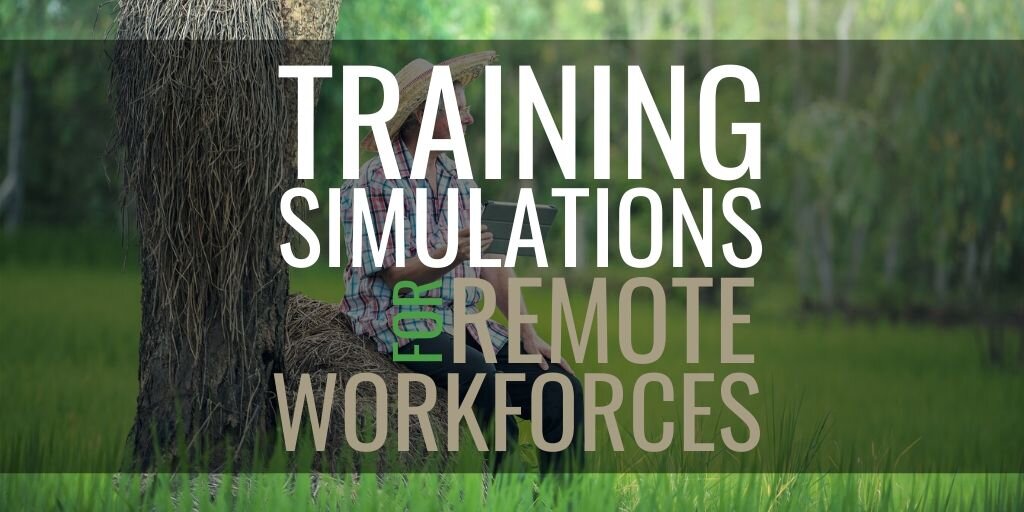If this is our “new normal” how do we go forward with virtual training and reskilling?
/Two months into the coronavirus shutdown, many organizations are still reeling financially and struggling to get a foothold in a business world that is now mostly virtual. How long this will continue is uncertain. While the curve has flattened in many places, the threat still looms of a second COVID-19 wave this fall, and a vaccine is by most estimates at least two years out.
What does this mean for how companies operate?
A picture is starting to emerge of a “new normal” that isn’t just temporary — it’s ongoing for the immediately foreseeable future. It means the quick pivot we’ve seen agile organizations make toward virtual communication and training needs to shift from being a stop-gap to being standard. Those organizations with the ability to conduct business virtually are well positioned to own the marketplace during the crisis, and to maintain their momentum once it’s over.
One of the biggest implications of the shift to virtual operations is the need to reskill employees. Even before the crisis, new technology was disrupting jobs and rewriting skill sets, but the coronavirus has turned a gradual trend into an immediate imperative. According to McKinsey, now is the time for companies to double down on their learning budgets so they can build resiliency against future disruptions.
What skills will be most important going forward?
We’ve known for a while that job-specific skills are taking a back seat to transferable skills such as critical thinking, creativity, emotional intelligence and leadership. It’s no longer about learning one set of specific, unchanging duties and tasks; it’s about being able to learn new duties and tasks as the environment changes. In the living example of this that we’re all experiencing now, this means being able to quickly learn how to conduct sales online, how to engage and lead teams that aren’t physically together, how to monitor and evaluate progress remotely, and how to manage technology without missing a beat.
How can organizations get their employees up to speed?
The biggest lesson from the pandemic is that we all need to be nimble. In the early stages of the crisis, everyone jumped in and learned on the fly. As we settle into COVID-19 times, organizations need to become more intentional about how they reskill or upskill employees.
Begin with a skills assessment
Things have changed, and so have organizational needs. Bring leadership and management together (online) to identify the skills that are needed now. Then, look at the various roles in the organization:
What are the duties/tasks associated with them?
Which duties/tasks remain relevant despite the pandemic?
Which duties/tasks are doable under pandemic conditions?
Which duties/tasks are no longer getting done optimally?
Once you have a list, go through it and indicate whether each item is critical or non-critical:
Any duties/tasks that aren’t getting done should become high-priority. This means changing how they get done and creating training on the new way of doing them. For example, the UK healthcare system is now conducting 100% of patient assessments by phone or video, with only 7% proceeding to face-to-face consults. Just a year ago, videoconference accounted for 1% of appointments.
Any duties/tasks that aren’t relevant represent person-hours not earning ROI. How can the skills needed to do these no-longer-relevant tasks be repurposed? Are there “adjacent” roles involving similar duties/tasks? For example, a West African company realized during the Ebola crisis that its workforce wasn’t flexible enough; it benefited by reskilling truck drivers to be excavator operators.
Any duties/tasks that are being done can still be optimized. A salesperson who’s historically done all her sales face-to-face is probably just starting to get comfortable doing sales online. Additional training can boost her comfort level and productivity.
Build the skills you need for your new business model
First priority is a “no-regrets” skill set of transferable skills that will be useful regardless of your business model. Include social, emotional, digital, and critical thinking skills. Plan to build skills digitally, assuming continuing and/or future lockdowns. Incorporate self-paced learning. Support employees’ mental wellness and resiliency so they can maintain self-confidence as their roles change.
Develop a journey orientation for individual team members. Things are changing, and regular check-ins can help ensure learning stays relevant to whatever conditions prevail. Taking into account a rapidly changing ecosystem can help you identify which “just in time” training is most critical to deliver.
Be iterative. Be ready to change if things aren’t working or if conditions change. This will make your organization more agile in the face of future disruption.
Consider every effective innovation part of your toolkit going forward. Your response to the current crisis will become part of your organization’s institutional learning, which will make it more robust and future-proof.
Guard your learning budget with your life
Many companies feel like they’re bleeding right now. It may seem rational to cut “extra” costs such as professional development. But consider the cost of failing to adapt in real time. Statistics from the economic downturn of 2008 show that companies did just that — they put their training on ice for two or three years and then redoubled it. They just delayed their investment, which ultimately didn’t net them any savings. Their teams could have used that learning while they were reeling from the crisis — not after the fact. An organization is only as resilient as its people.
In other words, consider learning and development a critical arm of your COVID-19 response strategy. Have a chat with an L&D professional to see how you can refocus your talent and come out stronger than ever.
How is your organization responding to the COVID-19 pandemic? Drop us a line in the Comments section below.
Need help transitioning your classroom training to online learning? Contact us here!










